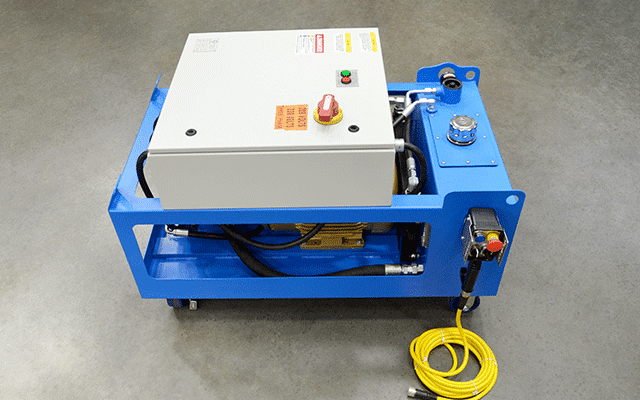In worst-case scenario, COVID-19 coronavirus could cost the U.S. billions in medical expenses

1 of the key concerns about the COVID-19 coronavirus pandemic has been the stress that conditions will place on the health care program. A new review printed April 23 in the journal Wellbeing Affairs found that the spread of the virus could cost hundreds of billions of bucks in immediate health-related expenses by yourself and require sources such as healthcare facility beds and ventilators that may perhaps exceed what is at the moment readily available.
The conclusions display how these prices and sources can be minimize significantly if the spread of COVID-19 coronavirus can be lessened to different degrees.
The review was led by the Public Wellbeing Informatics, Computational and Functions Analysis team at the Town College of New York Graduate University of Public Wellbeing and Wellbeing Policy, alongside with the Infectious Illness Clinical Outcomes Analysis Device at the Los Angeles Biomedical Analysis Institute, Harbor-UCLA Healthcare Centre and Torrance Memorial Healthcare Centre.
The team designed a pc simulation product of the total U.S. that could then simulate what would come about if different proportions of the population conclusion up finding contaminated with the COVID-19 coronavirus. In the product, every single contaminated particular person would establish different signs or symptoms over time and, based on the severity of those people signs or symptoms, go to clinics, crisis departments or hospitals.
The sources every single affected individual would require – such as health care staff time, medication, healthcare facility beds and ventilators – would then be primarily based on the health standing of every single affected individual. The product then tracks the sources involved, the involved prices and the outcomes for every single affected individual.
For case in point, if 20% of the U.S. population had been to turn into contaminated with the COVID-19 coronavirus, there would be an regular of eleven.2 million hospitalizations and one.six million ventilators made use of, costing an regular of $163.four billion in immediate health-related prices for the duration of the training course of the an infection.
The review exhibits the factors that could drive this volume up to 13.four million hospitalizations and 2.3 million ventilators made use of, costing an regular of $214.five billion. If fifty% of the U.S. population had been to get contaminated with COVID-19, there would be 27.9 million hospitalizations, four.one million ventilators made use of and 156.2 million healthcare facility bed days accrued, costing an regular of $408.8 billion in immediate health-related prices for the duration of the training course of the an infection.
This boosts to forty four.six million hospitalizations, six.five million ventilators made use of and 249.five million healthcare facility bed days (normal ward moreover ICU bed days) incurred, costing an regular of $654 billion for the duration of the training course of the an infection if 80% of the U.S. population had been to get contaminated. The substantial distinction in health-related prices when many proportions of the population get contaminated display the worth of any procedures that could reduce infections and, conversely, the possible cost of basically allowing the virus run its course – the “herd immunity” approach.
Basically set, making it possible for persons to get contaminated right up until herd immunity thresholds are satisfied would appear at a huge cost, and even if social-distancing steps had been calm and the state “opened up” as well early, the health care program, as properly as the broader financial system, would appear close to buckling under the weight of the supplemental prices.
What is THE Effects?
The review exhibits how pricey the coronavirus is compared to other typical infectious illnesses. For case in point, a one symptomatic COVID-19 an infection prices an regular of $3,045 in immediate health-related prices for the duration of the training course of the an infection by yourself. This is 4 times better than a symptomatic influenza case and five.five times better than a symptomatic pertussis case. Factoring in the prices from lengthier lasting effects of the an infection such as lung harm and other organ harm increased the regular cost to $3,994.
Importantly, for a sizable proportion of those people who get contaminated, health care prices will not conclusion when the energetic an infection ends, and prices will probable keep significant even immediately after the bulk of the pandemic has passed.
A continuing problem is that the U.S. health care program will turn into overloaded with the surge of COVID-19 coronavirus conditions and will subsequently not have adequate particular person-electrical power, ventilators and healthcare facility beds to accommodate the influx of individuals. The review exhibits that even when only 20% of the population gets contaminated, the existing number of readily available ventilators and ICU beds will not be adequate.
In accordance to the Modern society of Important Care Drugs, there are close to ninety six,596 ICU beds and sixty two,000 full-featured mechanical ventilators in the U.S., significantly lower than what would be essential when only 20% of the population gets contaminated.
THE More substantial Trend
Facts unveiled this week by Kaufman Hall illustrates the extent to which U.S. hospitals are presently suffering monetarily owing to the coronavirus.
Seeking at earnings before fascination, taxes, depreciation and amortization, hospitals’ running margins fell a lot more than 100% in March, dropping a full 13 proportion points relative to very last calendar year. Compared to most months, that’s a a great deal better alter. Running EBITDA margin was up just one% in March 2019, for case in point, and down one% in February of this calendar year.
These margins probable fell even even further throughout broader health devices, which usually involve significant doctor and ambulatory operations exterior of the healthcare facility, Kaufman Hall found. Over-all, running margins fell one hundred seventy% beneath budget for the thirty day period.
Twitter: @JELagasse
Electronic mail the author: [email protected]




